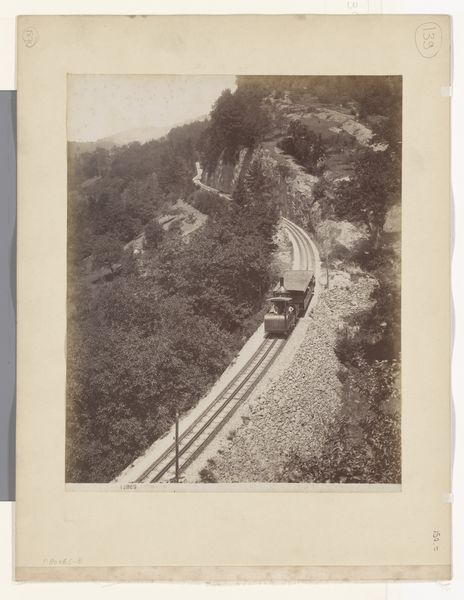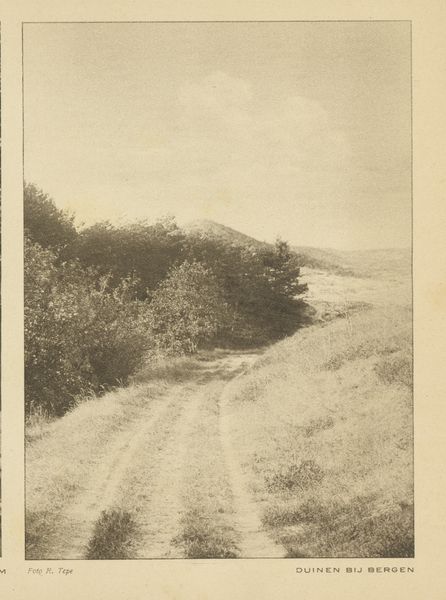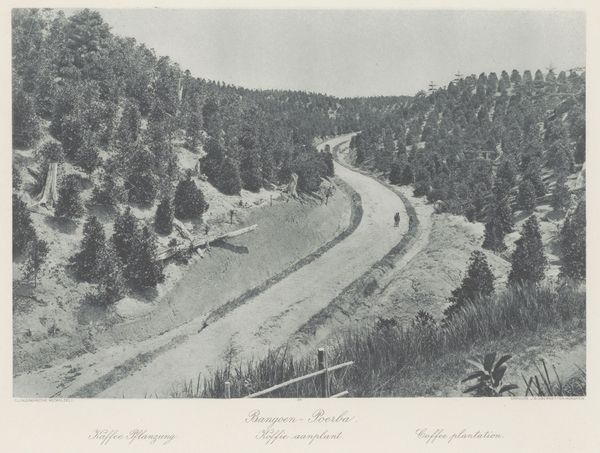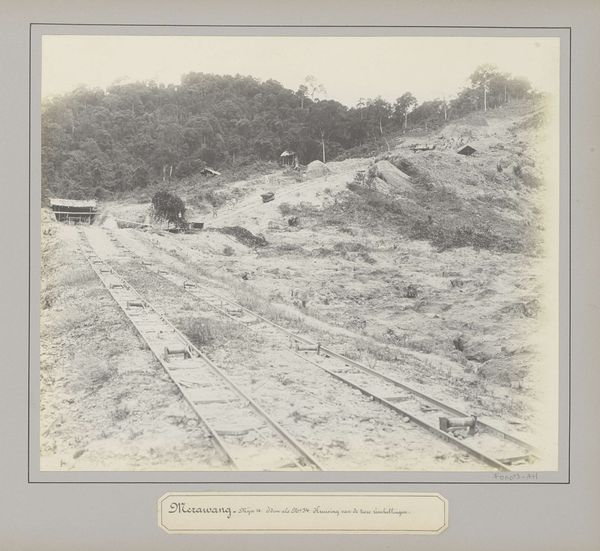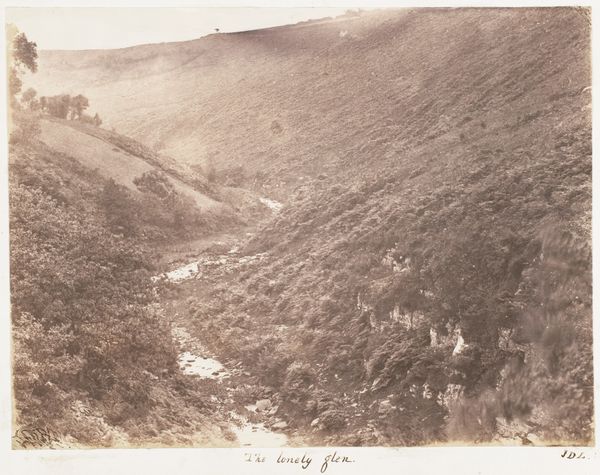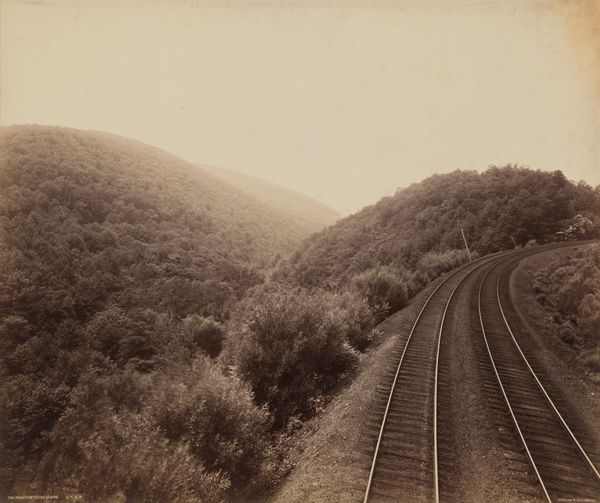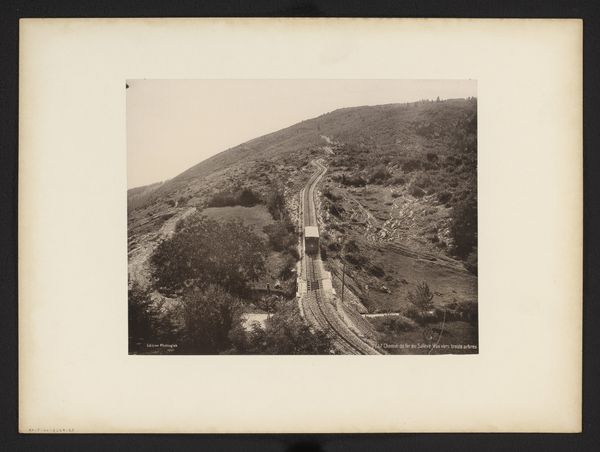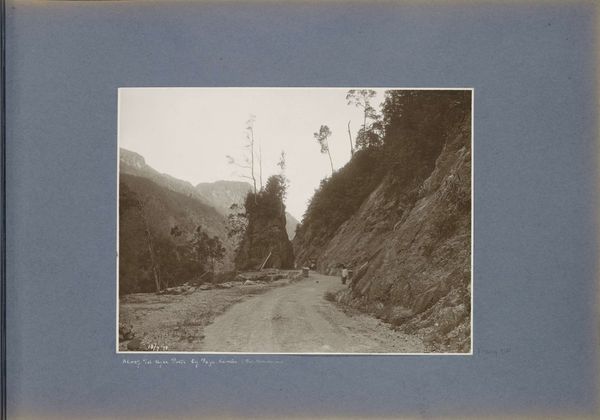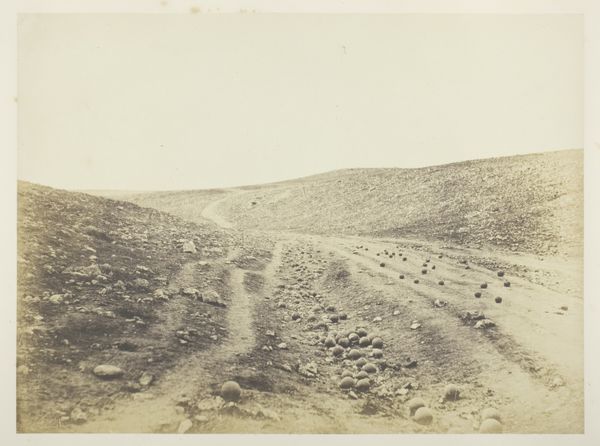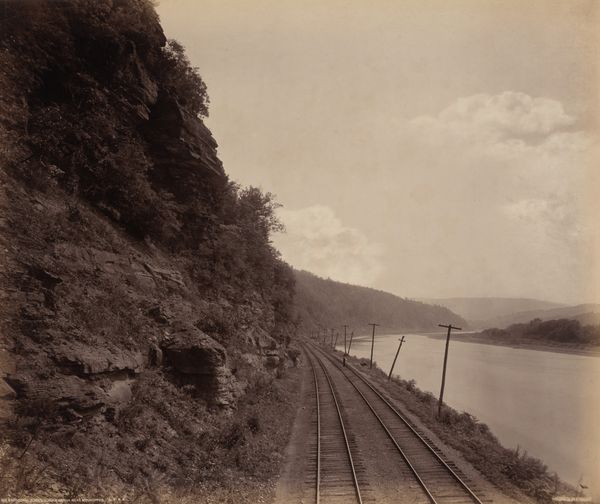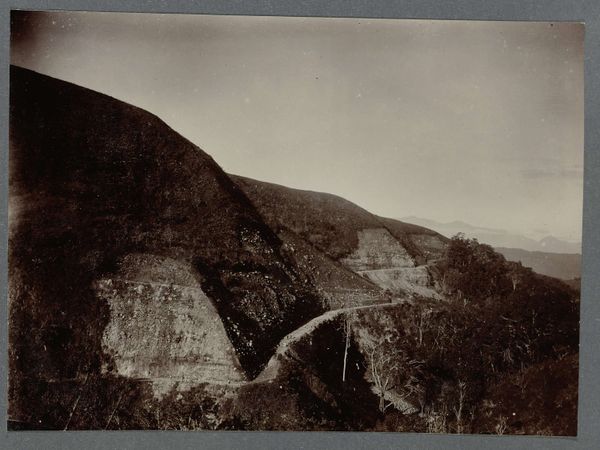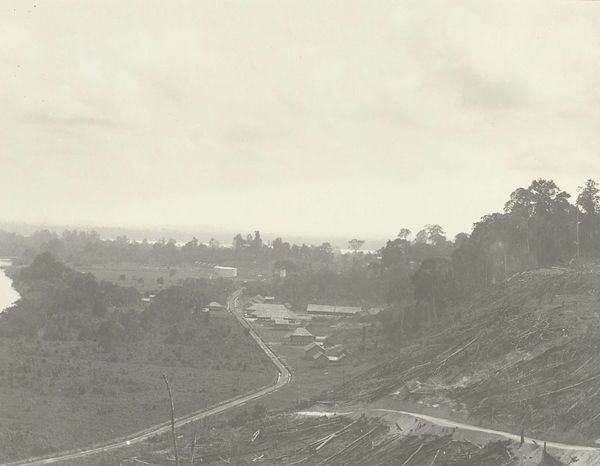
Trein van de Staatsspoorwegen op het spoor in de heuvels van Gelderland before 1915
0:00
0:00
photography
#
landscape
#
photography
#
realism
Dimensions: height 161 mm, width 239 mm
Copyright: Rijks Museum: Open Domain
Editor: So, this photograph, “Trein van de Staatsspoorwegen op het spoor in de heuvels van Gelderland,” or "Train of the National Railways on the Tracks in the Hills of Gelderland," was taken before 1915. The monochromatic palette really highlights the texture of the landscape, but what I find most striking is how the train is framed by the hills, almost like it's being embraced by the land. What do you see in this piece? Curator: The train is a powerful symbol, isn’t it? Not just of modernity and progress barreling through the landscape, but also of connection, movement, and even perhaps, a bit of disruption. Think of how railways reshaped cultural perceptions of distance and time. Do you notice the smoke? It rises like a signal. Editor: That's a good point. The smoke adds a dynamic element to what could otherwise be a static landscape. It does signal movement and change. How does that tie into cultural memory, though? Curator: In its time, that smoke represented innovation, connecting people to trade routes, cultural exchange, and altered their sense of place in the world. Its persistent symbol, the railway, became a tangible emblem of societal transformation. This image speaks of possibility and connectivity. The rails as arteries, of course, but they might also cut off paths that were naturally forged long before. Editor: So the railway, this emblem of progress, can be seen as both connecting and disrupting, a complex duality represented within the photograph itself. Thank you for showing me that! Curator: Indeed. By understanding the layers of meaning encoded within images, we can interpret how we perceive them today and engage in broader conversations about history and culture. It allows for a richer encounter with these cultural relics of industrial progress.
Comments
No comments
Be the first to comment and join the conversation on the ultimate creative platform.


